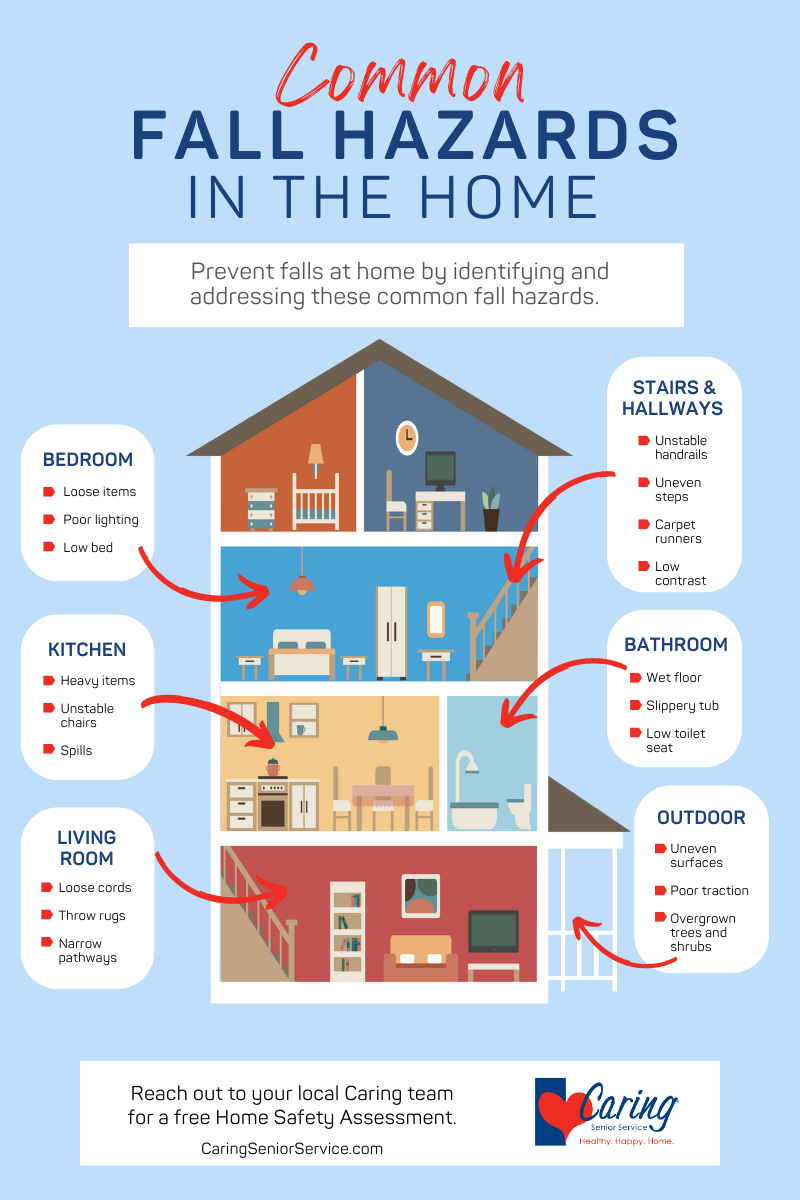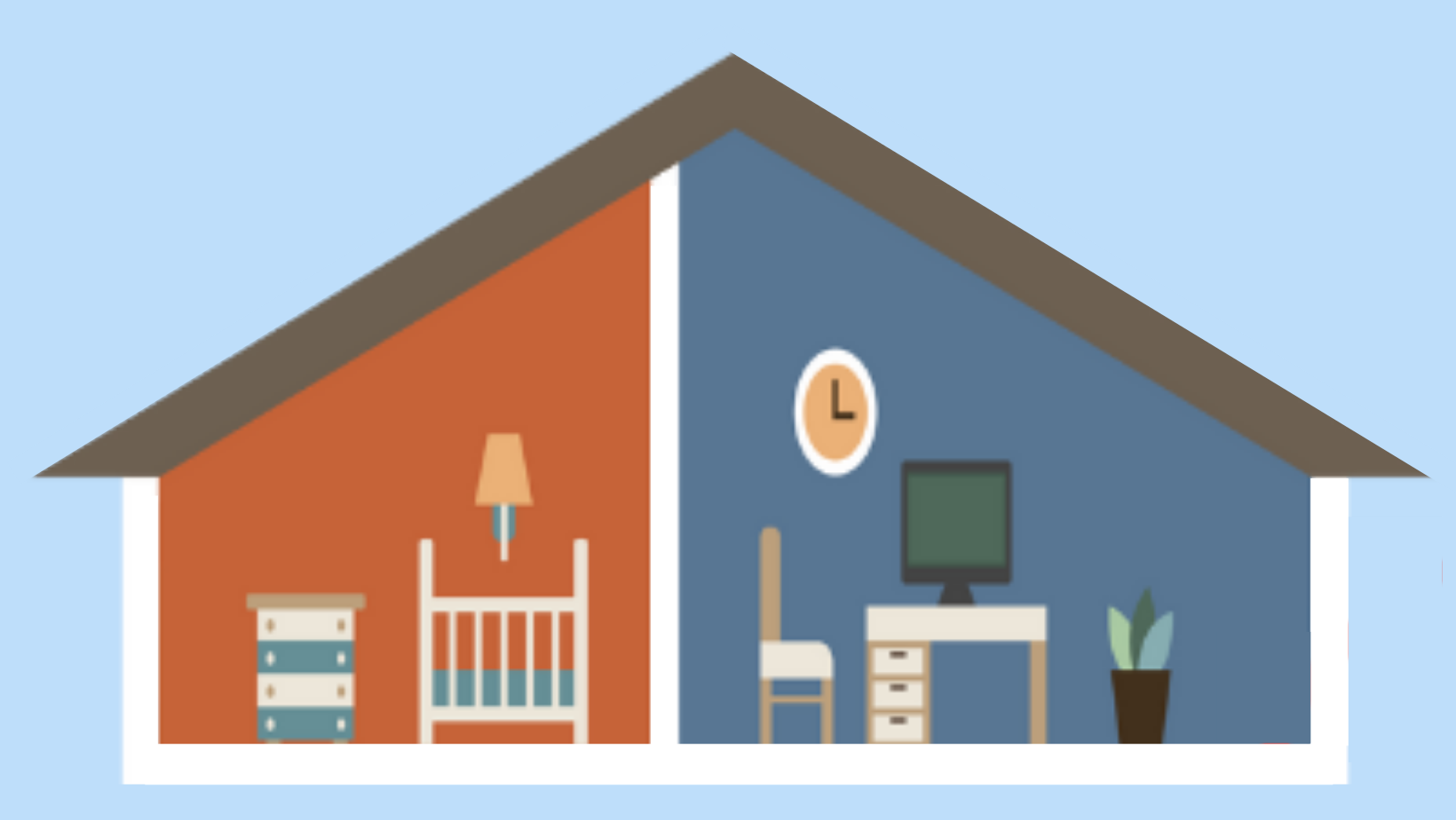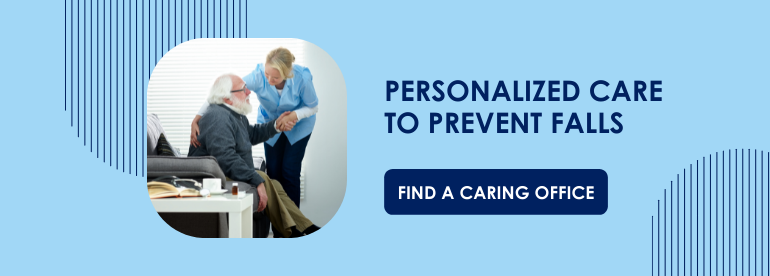As seniors age, they may spend more time at home. However, home can be a dangerous place to be if fall and safety hazards aren't addressed. Here are some of the most common fall hazards in the home and tips on how to address them.
Read the text alternative Common Fall Hazards in the Home.

Share this Image On Your Site
Addressing Common Fall Hazards
Bedroom
FACT: Falls caused by poor lighting result in 8 million falls each year in the US.
Here's how you can address common fall hazards in the bedroom.
- Loose items: Keep loose items off the floors, like dirty clothes or a towel, to prevent seniors from tripping over them.
- Poor Lighting: Poor lighting anywhere in the home can reduce visibility and lead to a serious fall. Make sure the home is well lit and consider adding night lights down hallways and stairs in case seniors get up during the night.
- Bed: Getting out of bed can become dangerous for seniors who are prone to falling. Install bedrails to the side of the bed to help again seniors stay in bed and get out of bed safely.
Stairs and Hallways
FACT: Adults over 75 years old are 5x more likely to fall on the stairs than younger adults. FACT: Every 30 seconds an individual in the US fall on the stairs.
- Unstable handrails: When seniors go up or down the stairs, they may rely on the handrails to support their weight. A weak or unsteady handrail could cause them to fall.
- Carpet runners: Carpet runners are decorative elements that run down the stairs or hallway. These carpets can create uneven surfaces that may cause a senior to trip.
- Low contrast: Seniors with vision problems may not be able to see where one stair ends and another begins. Consider adding a contrasting color or design to the end of the stair treads.
Bathroom
FACT: 80% of senior falls occur in the bathroom.
- Wet floor: The bathroom floor can become slippery as a senior goes about their dailt routine. Add skid-resistant rugs that won’t slide on hard surfaces to help absorb water droplets.
- Slippery tub: The bathtub is a common place for falls. Use non-slip shower mats to give the tub more traction or consider a shower chair and handheld shower head.
- Low toilet seats: Seniors may have difficulty standing up after using the restroom, especially if the toilet seat is low. Install grab bars near the toilet to help a senior sit down and stand up with ease. Or add a raise toilet seat.
Kitchen
FACT: Every 19 minutes, a senior dies from a fall.
- Heavy items: It can be dangerous for seniors to lift heavy appliances in their kitchen. If their strength falls, a senior may accidentally drop the appliance on themselves or they may fall. Try placing heavy appliances on low shelves or on the countertop.
- Unstable chairs: Unstable furniture can knock a senior off their balance. Make sure the chairs are stable and won’t slide around the kitchen floor. Chairs with armrests are best because the armrests provide extra stability when seniors stand up.
- Spills: We all make messes in the kitchen. But these messes can turn into hazards for seniors if they aren’t cleaned up quickly.
Living Room
FACT: Each year, seniors are treated in the emergency room for falls.
- Cords and wires: Make sure that cords and wires are out of the way
- Throw rugs: Throw rugs might look great in your space, but they can be a tripping hazard. They can cause uneven surfaces, and seniors might trip over the edges. If you do have a rug, secure it with tape or other adhesive.
- Narrow pathways: Seniors need ample space to navigate the home. Narrow pathways can cause them to list their balance and fall. Ensure that there are clear pathways to navigate around furniture in the living room.
Outdoors
FACT: 30% of senior falls occur outside the home
- Uneven or cracked concrete: Uneven concrete in your driveway sidewalk, or patio could cause a senior to trip and fall. Repair the concrete if possible, or mark hazardous areas with bright paint, small neon flags, or other items.
- Poor traction: Outdoor areas may become slick due to weather or other facts. The lack of traction can cause a senior to slip. Try adding textured paint to your deck, abrasive strips to stairs, or having your senior loved one wear shoes with good traction. Depending on the weather, you may need to put ice melt on the driveway.
- Overgrown trees and shrubs: Pruning tall branches may be difficult and could cause a senior to overexert or injure themselves. However, If not taken care of, branches and shrubs can become a hazard to the home. Consider helping out your loved one or hiring a professional.
[Text Alternative] Common Fall Hazards in the Home
Bedroom
- Loose items
- Poor Lighting
- Low bed
Stairs & Hallways
- Unstable handrails
- Uneven steps
- Carpet runners
- Low contrast
Kitchen
- Heavy items
- Unstable chairs
- Spills
Bathroom
- Wet floor
- Slippery tub
- Low toilet seat
Living Room
- Loose cords
- Throw rugs
- Narrow pathways
Outdoor
- Uneven surfaces
- Poor traction
- Overgrown trees and shrubs
Reach out to your local Caring team for a free home safety assessment.


